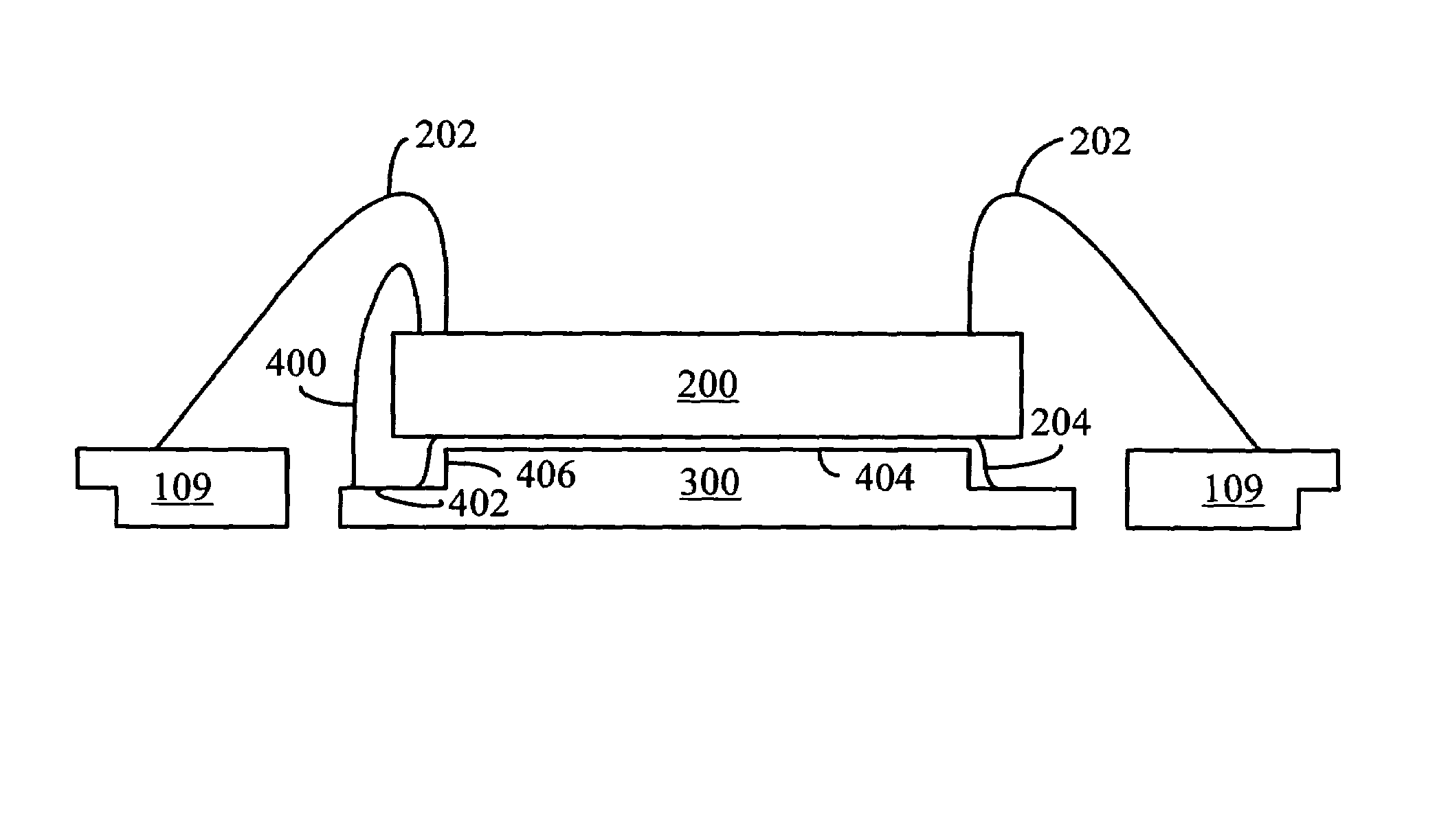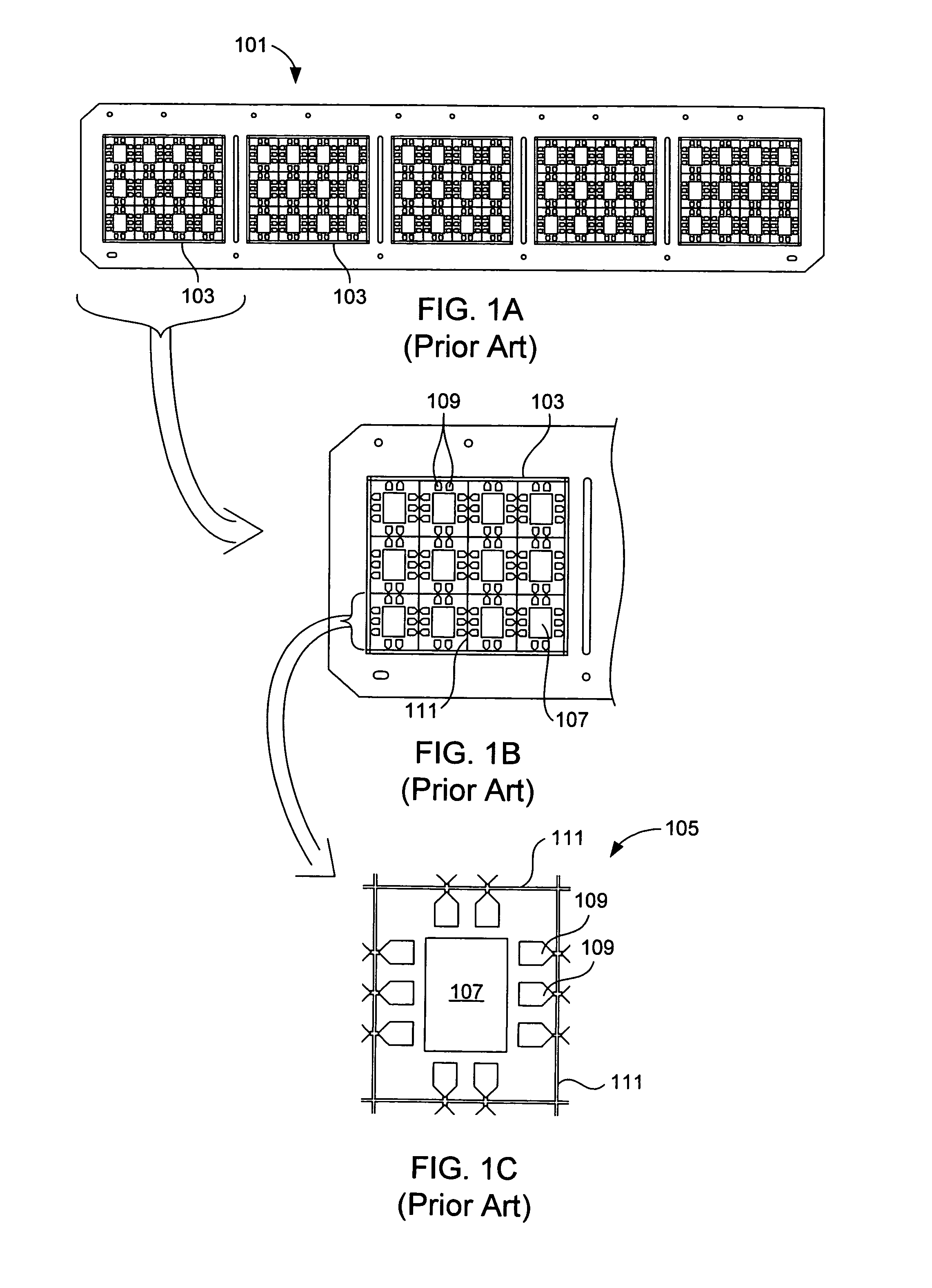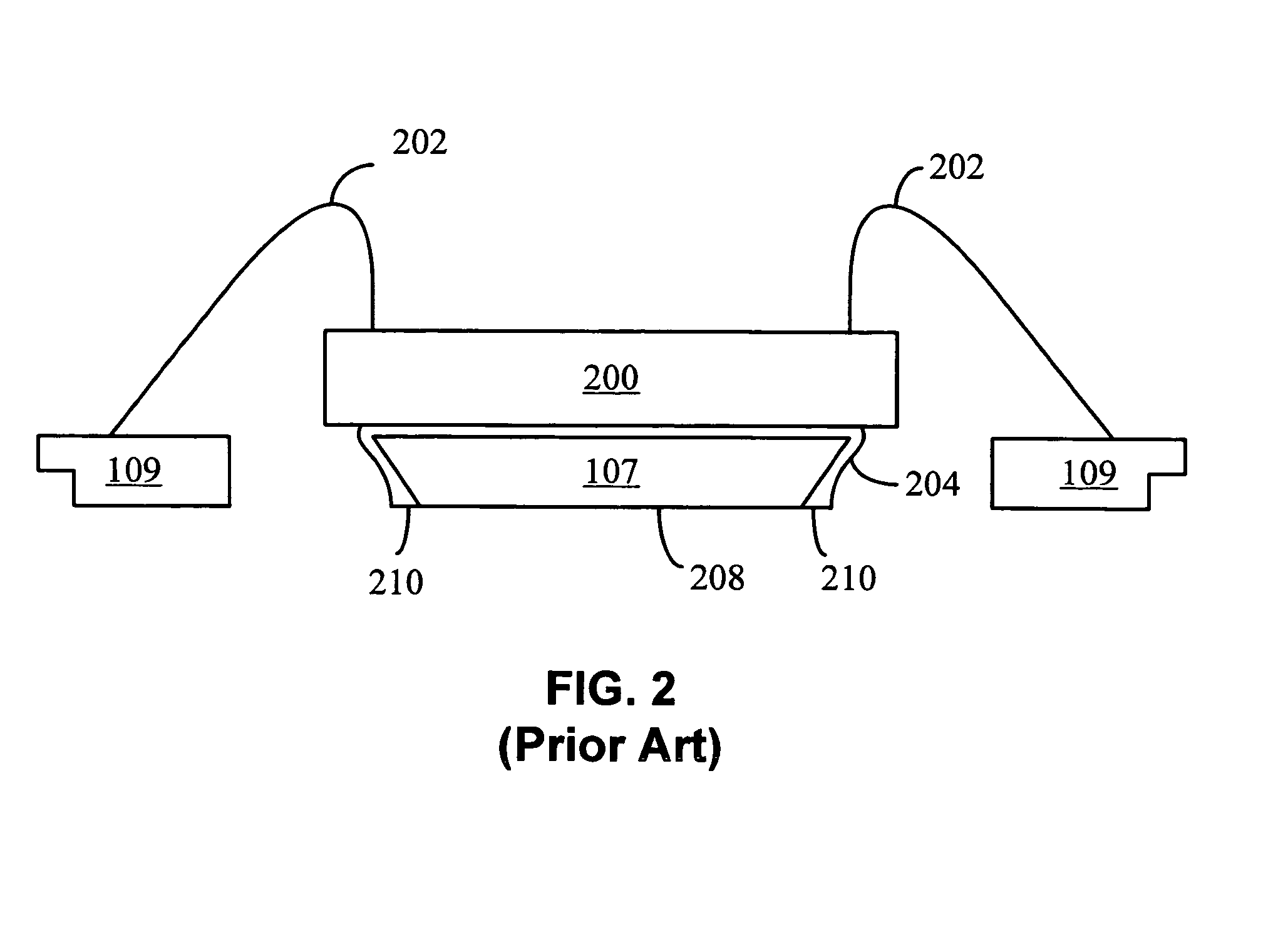Die attach pad for use in semiconductor manufacturing and method of making same
- Summary
- Abstract
- Description
- Claims
- Application Information
AI Technical Summary
Benefits of technology
Problems solved by technology
Method used
Image
Examples
Embodiment Construction
[0021]In one embodiment, a die attach pad having a peripheral ledge for collecting any adhesive that may overflow from the upper surface of the die attach pad is described. FIG. 3 illustrates a cross-section view of an LLP package constructed in accordance with an embodiment of the present invention. A die attach pad 300 has a die support surface 302 and a peripheral ledge 304. When the die 200 is affixed to the die attach pad 300, a portion of the adhesive 204 may overflow from the upper surface 302, where it accumulates on the peripheral ledge 304 instead of flowing down toward the bottom surface 306. In this manner, the peripheral ledge 304 collects excess adhesive 204 that spills over from the upper surface 302, preventing it from flowing down off of the die attach pad 300 and creating undesired conductive areas on the outer surface of the encapsulant 312.
[0022]It can be observed that creating the ledge 304 can generally produce an upper support surface 302 having a smaller area...
PUM
 Login to View More
Login to View More Abstract
Description
Claims
Application Information
 Login to View More
Login to View More - R&D
- Intellectual Property
- Life Sciences
- Materials
- Tech Scout
- Unparalleled Data Quality
- Higher Quality Content
- 60% Fewer Hallucinations
Browse by: Latest US Patents, China's latest patents, Technical Efficacy Thesaurus, Application Domain, Technology Topic, Popular Technical Reports.
© 2025 PatSnap. All rights reserved.Legal|Privacy policy|Modern Slavery Act Transparency Statement|Sitemap|About US| Contact US: help@patsnap.com



